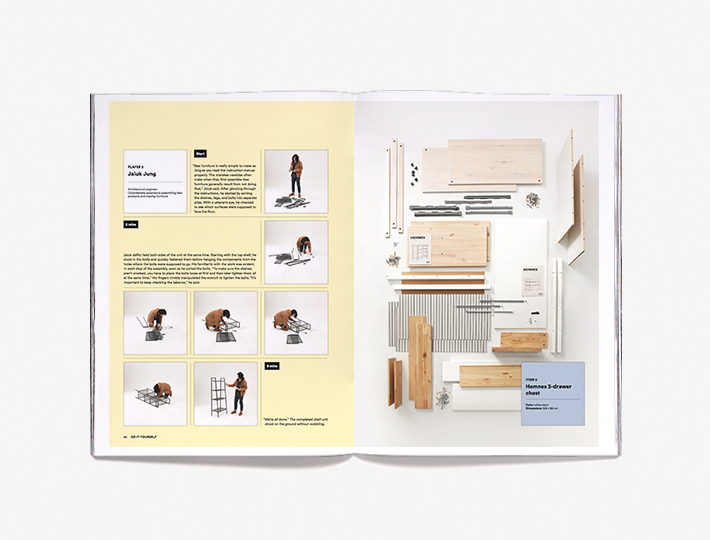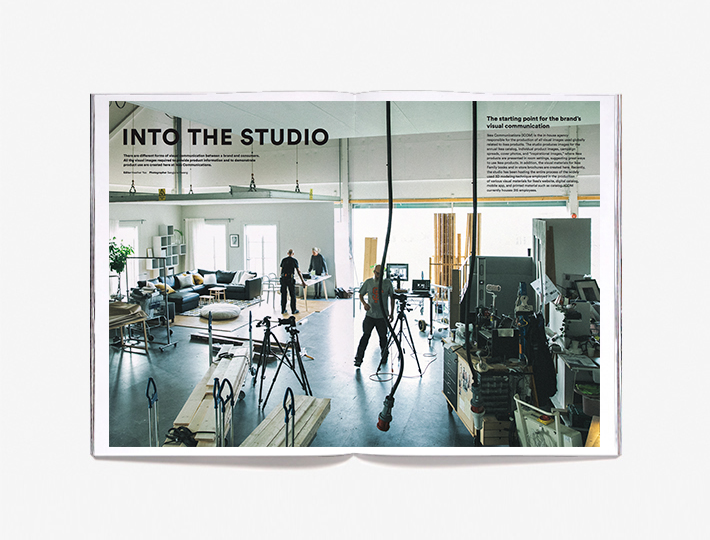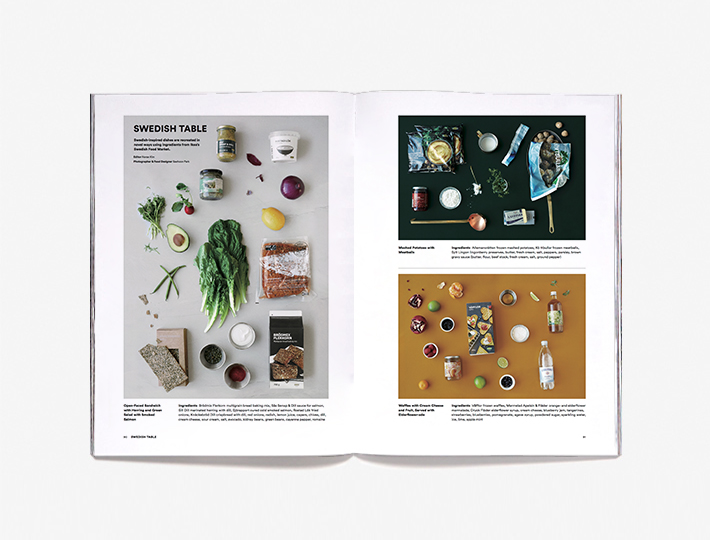| ■ About the Publication Magazine B is an ad-free monthly publication that dedicates each issue to one well-balanced brand unearthed from around the globe. The magazine introduces the brand’s hidden stories, as well as its sensibility and culture, and is an easy but also serious read for anyone with an interest in brands. ■ About the Publisher JOH & Company is a creative company founded in April 2011 by Suyong Joh, former Director of Creative Marketing & Design at NHN. He oversaw and directed the construction of NHN Green Factory, which is the headquarters of NHN, the company that has earned domestic and international reputation as “Google of Korea.” He also created a sensation in the publishing world when he compiled the construction process in a publication, Green Factory. Currently, he leads JOH & Company, a group of creative directors that he has brought together from various fields, and he is conducting complex projects encompassing architectural design, brand consultation, interior, food & beverage service, and product design, based on his own experience. The first fruit of such endeavor is magazine B. ■ About the Issue Welcome to the 63rd edition of B, also our very first edition of 2018. As our readers know, we make all editions of B available as standalone volumes. That’s why, for us, putting out a special New Year’s issue has never been the grand fanfare event it can be at other monthly magazines. But that is not to say that the first editions of each year are not special. Every January and July, we publish a special two-month double issue. For our editorial staff, this means a mettle-testing race against deadlines. It means reviewing the usual amount of source material several times, spending significantly more time with more interviewees, and spending more time mining the depths of the brand at hand. Making a bound issue requires a longer, more time-consuming process, which is why we need to be extremely careful with our brand selection from the beginning. The final candidate must be compelling enough—in terms of overall brand narrative as well as wider social and cultural relevance—to merit all the extra pages. Ikea, this edition’s featured brand, undoubtedly satisfies such criteria. In size alone, Ikea is already a veritable empire in home furnishings. In influence, no other brand has permeated so deeply into the lifestyles of people of all genders, income levels, occupations, not to mention places of residence. In level of brand affinity, the company can be compared to Starbucks and Google. There’s no denying that Ikea has already become a familiar part of our daily lives. Some might ask: “How?” What enabled Ikea’s rise to fame from modest beginnings as a wholesale furniture operation in the small town of Älmhult in southern Sweden? Many would agree that the brand’s democratic ideals were key. After all, democracy is about giving power to the people. And what drives Ikea is not a focus on brand power but a belief in the power and potential of people—those who use Ikea products and come to share in its culture. From the giant warehouse-model stores and at pack packaging to the continuously updated assembly methods and practicality- first designs, all of the brand’s defining features reflect a wholly user-focused approach. According to Ikea, good design is for everyone, not just a privileged few. The company’s tried and true system of delivering mass produced goods at low prices is underpinned by this belief that quality furnishings should be available to all. It’s no wonder, then, that Ikea has often provided the first spark of inspiration for people seeking to personalize their spaces. Back when I was a student, for example, and still a stranger to the concept of interior design, the Ikea catalog was like a free textbook, a guide to help me envision and realize my ideal space. I imagine it has played the same role for those living in unfamiliar environments away from home, offering ideas for how to make any space livable, no matter its size, its proximity to the place I call home, or the duration of my stay. Ikea also holds a special significance for young entrepreneurs hoping to start their companies with very little capital. Miguel McKelvey, co-founder of the shared workspace company WeWork, once said in an interview that he spent many weekends during the company’s early days driving to Ikea to buy countless wooden boards to be turned into office desks. I imagine that to the WeWork founders, these boards were not mere pieces of wood but rather symbols of the viability of their vision. It wouldn’t be too much of an exaggeration to say that Ikea is now no longer a brand but a public good. It has given people a sense of material and emotional abundance to live their lives fully. In this way, it accomplished as a business what we would more often expect of our societies and our national governments. Ikea’s stores are stocked with thousands of different home furnishing goods, but at the end of the day, what the company provides us with is not products but solutions. Other companies might see design as some sort of wrapping paper for a final touch, but Ikea understands design as a means to improve and enhance environments and situations on a number of levels. Thanks to Ikea designs, customers around the globe are able to find solutions that t their lifestyle or business needs. Working to provide better solutions to more people: I imagine this is the kind of vision that will de ne the brands of the future. Content & Editorial Director Eunsung Park ■ Table of contents 02 Intro 09 Editor’s Letter 12 Overview The current trends and influences of Ikea over the last 10 years noted by the media 16 A Walk through the Town The meaning of residence observed through the daily life of Västra hamnen in southern Sweden 22 Home Visit Ikea users in different cities talk about their homes 34 Opinion Lydia Choi-Johansson Intelligence Specialist, Inter Ikea Systems 38 Life at Home Report The Life at Home Report, inspired by everyday lives in homes across the world 42 Prototyping Visit the Prototype Shop, where Ikea designs are refined 48 Opinion Sara Kristoffersson Professor at Konstfack University College of Arts, Crafts, and Design 52 Lineup Eight key concepts and product lines that highlight Ikea’s philosophy 62 Values Four principles that make Ikea an unrivaled brand 66 Do It Yourself A beginner and a veteran tackle the DIY assembly process 72 Into the Studio Ikea Communications, where all of Ikea’s images are made 78 Catalog The Ikea catalog, read by more than 200 million consumers in 35 languages 80 Store Visit The strategies and characteristics of Ikea stores 86 Tasting the Moment Ikea’s food operations reflect the identity of its birthplace 90 Swedish Table Recipes made with ingredients sold at Ikea 94 Interiors Homes and commercial spaces decorated with Ikea products 104 Inside Space10 Space10, a research lab for innovation of life and home established by Ikea’s outside investment 110 Opinion Carla Cammilla Hjort Co-founder and Director, Space10 Simon Caspersen Co-founder and Communication Director, Space10 114 Labs The evolving concepts of furniture through the works of four young designers 122 The Democratic Way The Democratic Design Centre and the Hubhult office, designed for communication and interaction—the realization of both corporate and design philosophies 132 Brand Story Smart brand strategy contributing to Ikea’s growth 140 Ingvar Kamprad The words of Ikea’s founder that have become the guiding spirit of the brand 142 Test Lab The values of democratic design are put to the test in the Ikea Test Lab 144 Statement The Democratic Design Days where the Ikea communicates its visions 146 Collaborations Four collaborations that reveal the brand’s openness and future-oriented perspective 150 Market Study Ikea’s inroads into the Korean market as told by André Schmidtgall, Country Retail Manager, Ikea Korea, and Nicolas Johnsson, Country Marketing Manager, Ikea Korea 152 Interview Marcus Engman Head of Design, Ikea of Sweden 156 Figures Numbers and figures that show the global currents and brand values 159 References 161 Outro |
 |
 |
 |